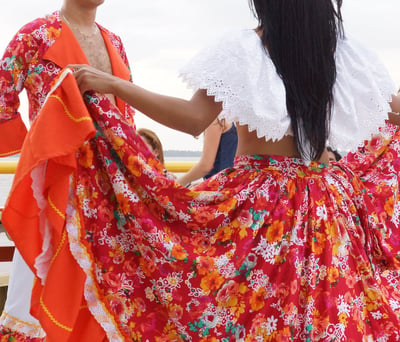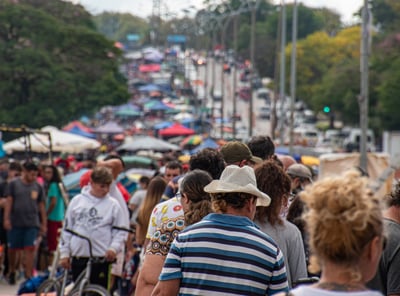Travel Like a Local: How to Blend In and Experience a Destination Authentically


A Guide to Immersing Yourself in Local Culture Beyond Tourist Attractions
Observe Before Engaging
Every culture has its rhythm, and the best way to understand it is to watch. Observe how people interact in public spaces, how they dress, how they greet each other, and how they behave in restaurants and shops. There is an unspoken etiquette in every destination—whether it's the way people queue in Japan, the cheek-kissing custom in France, or the relaxed concept of time in many Latin American countries. These subtleties matter.
Before speaking loudly in your native tongue or assuming everyone understands English, take a moment to absorb the environment. See how locals conduct themselves, and mirror that behavior. By moving with the cultural flow instead of against it, you’ll find doors opening to more authentic experiences.


Dress the Part
Nothing marks a tourist faster than inappropriate clothing. In many parts of the world, dressing modestly earns respect, while in others, casual wear is the norm. Research before you go. In European cities, smart-casual attire will help you blend in, while in Southeast Asia, covering shoulders and knees is often expected when visiting temples or sacred sites.
Beyond cultural norms, dressing like a local can also be practical. Wearing bright sneakers and a backpack in an old European city screams “tourist,” making you more susceptible to scams. A simple adjustment—neutral tones, comfortable yet stylish footwear, and a local shopping bag—can make all the difference in being seen as part of the community rather than an outsider.
Learn Key Phrases in the Local Language
Language is a gateway to cultural connection. Even if you're not fluent, learning a few essential phrases demonstrates respect. Start with greetings like “hello,” “thank you,” “please,” and “excuse me.” In places where English isn’t commonly spoken, knowing how to ask for directions or order food in the local tongue can transform your experience.
In destinations across Asia, phrases like “Terima kasih” (thank you in Indonesia and Malaysia), “Xie xie” (谢谢, thank you in Mandarin), and “Arigato” (ありがとう, thank you in Japanese) go a long way in earning smiles and goodwill. Similarly, in Latin America, “Gracias” (thank you) and “Por favor” (please) show basic courtesy that locals appreciate.


Dine Where the Locals Eat
Skip the tourist-packed restaurants with English menus at the entrance. Instead, follow the locals. Observe where they eat and what they order. A bustling market stall or a small family-run eatery often offers the most authentic cuisine.
In many countries, street food is a way of life. Whether it’s tacos in Mexico, satay in Indonesia, or bánh mì in Vietnam, some of the most memorable meals are found at street vendors. If unsure about hygiene, follow the rule: eat where locals eat. A busy stall with a high turnover usually means fresh ingredients.
Use Public Transport
Taxis and private cars may be convenient, but they keep you disconnected from the city's heartbeat. Taking buses, trains, or even rickshaws allows you to see the daily life of residents. You’ll witness morning commutes, school children chatting on their way home, and vendors carrying baskets of fresh produce.
Public transport also offers spontaneous interactions. A fellow passenger might help you with directions, or you might overhear local conversations that give you deeper insight into the culture. Even if navigating a foreign transit system seems daunting, the reward is worth the challenge.


Shop at Local Markets
Souvenir shops often sell mass-produced items with little cultural significance. Instead, visit local markets to find handcrafted goods and regional specialties. In Marrakech, the souks are a sensory overload of colors and scents, while in Bangkok, floating markets offer fresh tropical fruits and handmade crafts.
Bargaining is common in many markets, but approach it with respect. In places like India and Morocco, negotiation is expected, while in Japan and Scandinavia, prices are usually fixed. Understanding these cultural nuances enhances your experience and ensures fair transactions.
Respect Local Customs and Etiquette
Cultural missteps can happen, but a bit of research minimizes them. In Thailand, never touch someone’s head, as it’s considered the most sacred part of the body. In Muslim-majority countries, be mindful of modest dress codes. In Italy, ordering a cappuccino after breakfast might earn you a raised eyebrow from a barista, as locals typically switch to espresso after morning hours.
Respect extends beyond behavior—it includes how you photograph people and places. Always ask before taking someone’s picture, especially in indigenous communities. Some cultures view photography as intrusive or even disrespectful.


Engage in Local Activities
To truly blend in, participate in activities locals enjoy. This could mean attending a football match in Argentina, joining a tai chi session in a park in China, or taking a salsa class in Colombia. Not only do these experiences enrich your journey, but they also create genuine connections with the people around you.
If visiting a destination known for craftsmanship—be it pottery in Mexico or batik painting in Indonesia—consider taking a short workshop. These hands-on experiences offer insight into cultural traditions and provide meaningful souvenirs beyond mass-market trinkets.
Slow Down and Listen
One of the greatest mistakes travelers make is rushing through destinations, trying to check off attractions. Instead, slow down. Have conversations with locals, sit in a café without an agenda, and allow serendipity to shape your day. You’ll be surprised at the richness that unfolds when you let go of rigid itineraries.
Being present and attentive transforms travel. A street musician’s melody, a grandmother’s smile at the market, the quiet beauty of a sunrise over unfamiliar rooftops—these are the moments that linger long after the trip ends.
Leave No Trace
Part of respecting a destination is minimizing your impact. Whether in a bustling city or a remote island, be mindful of waste, avoid single-use plastics, and support eco-conscious businesses. In natural landscapes, follow Leave No Trace principles: stick to marked trails, respect wildlife, and leave places as you found them.
Supporting local economies is also an act of responsible travel. Choose family-run accommodations, buy directly from artisans, and eat at locally-owned restaurants. These small choices contribute to the community in meaningful ways.
Conclusion: Travel as a Guest, Not a Spectator
To travel like a local is not about deception—it’s about deeper connection. It’s about walking into a place not as a detached observer, but as someone eager to understand, respect, and embrace what makes it unique. By listening more than speaking, learning more than assuming, and engaging more than consuming, we open ourselves to the true magic of travel.
The goal is not to blend in perfectly—after all, you are a visitor—but to move through the world with curiosity, grace, and respect. When you travel as a guest, not merely a tourist, the world welcomes you in ways you never expected.
✉️ Contact:
Curated by TrueTrip Hub |
© 2025 Invisible Atlas — All rights reserved.
Invisible Atlas
Journey Beyond the Visible
invisible.atlas@truetriphub.com
